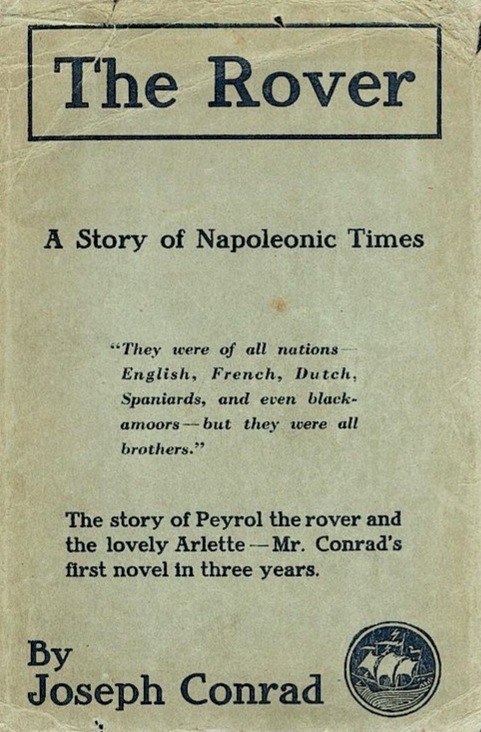The Rover (novel) on:
[Wikipedia]
[Google]
[Amazon]
 ''The Rover'' is the last complete novel by
''The Rover'' is the last complete novel by
 ''The Rover'' is the last complete novel by
''The Rover'' is the last complete novel by Joseph Conrad
Joseph Conrad (born Józef Teodor Konrad Korzeniowski, ; 3 December 1857 – 3 August 1924) was a Poles in the United Kingdom#19th century, Polish-British novelist and short story writer. He is regarded as one of the greatest writers in t ...
, written between 1921 and 1922. It was first published in 1923, and adapted into the 1967 film of the same name.
Plot summary
The story takes place in the south of France, against the backdrop of theFrench Revolution
The French Revolution ( ) was a period of radical political and societal change in France that began with the Estates General of 1789 and ended with the formation of the French Consulate in November 1799. Many of its ideas are considere ...
, Napoleon
Napoleon Bonaparte ; it, Napoleone Bonaparte, ; co, Napulione Buonaparte. (born Napoleone Buonaparte; 15 August 1769 – 5 May 1821), later known by his regnal name Napoleon I, was a French military commander and political leader who ...
's rise to power, and the French-English rivalry in the Mediterranean
The Mediterranean Sea is a sea connected to the Atlantic Ocean, surrounded by the Mediterranean Basin and almost completely enclosed by land: on the north by Western and Southern Europe and Anatolia, on the south by North Africa, and on the e ...
. Peyrol (a master-gunner in the French republican navy, pirate, and for nearly fifty years "rover of the outer seas") attempts to find refuge in an isolated farmhouse (Escampobar) on the Giens Peninsula near Hyères
Hyères (), Provençal Occitan: ''Ieras'' in classical norm, or ''Iero'' in Mistralian norm) is a commune in the Var department in the Provence-Alpes-Côte d'Azur region in southeastern France.
The old town lies from the sea clustered around t ...
.
The story is about Peyrol's attempt at withdrawal from an action- and blood-filled life; his involvement with the pariahs of Escampobar; the struggle for his identity and allegiance, which is resolved in his last voyage.
Trivia
Conrad placed on the title page an epigraph taken fromEdmund Spenser
Edmund Spenser (; 1552/1553 – 13 January 1599) was an English poet best known for ''The Faerie Queene'', an epic poem and fantastical allegory celebrating the Tudor dynasty and Elizabeth I. He is recognized as one of the premier craftsmen of ...
's ''The Faerie Queene
''The Faerie Queene'' is an English epic poem by Edmund Spenser. Books IIII were first published in 1590, then republished in 1596 together with books IVVI. ''The Faerie Queene'' is notable for its form: at over 36,000 lines and over 4,000 sta ...
'':
::''Sleep after toyle, port after stormie seas,''
::''Ease after warre, death after life, does greatly please''
This also became Conrad's epitaph
An epitaph (; ) is a short text honoring a deceased person. Strictly speaking, it refers to text that is inscribed on a tombstone or plaque, but it may also be used in a figurative sense. Some epitaphs are specified by the person themselves be ...
.
External links
* * 1923 British novels Novels by Joseph Conrad Historical novels Novels set in Provence British novels adapted into films {{1920s-hist-novel-stub